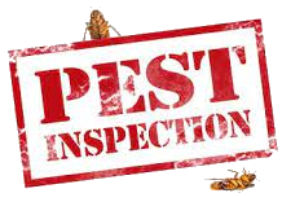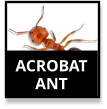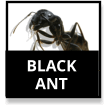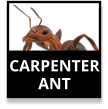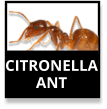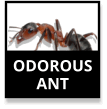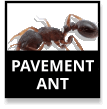LITTLE BLACK ANT CONTROL YARDLEY PA
Are little black ants a big problem? They may not be as long as they restrict their activities to the outdoors. Unfortunately, little black ants can very easily come indoors. When they do, they are looking for food, water and a place to build a nest.
Yardley area property owners who see numerous little black ants clustering in one spot in the landscaping have little cause for concern, especially if the nest is placed well away from any structures. Chances are good that the ants can find everything they need without coming indoors.
However, these ants may wander quite far afield as they seek reliable sources of food to keep the colony going. Given their tiny size, little black ants can slip inside through the smallest of cracks. Thanks to a powerful sense of smell, they are led to food in even the smallest quantities. A forgotten spill of crumbs in a corner may be all that is needed to start a full-blown infestation.
Of course, contaminating food that was meant for people is only the beginning of the problem. Little black ants may construct indoor nests, frequently in woodwork or masonry. As these colonies mature, their nests get larger. Some of these nests may begin to threaten the structural integrity of the building.
While encountering a few ants indoors is little cause for panic, there is good reason to be concerned. Typically, seeing a handful of ants signals a larger problem going on behind the scenes. Somewhere in the building, there may be thousands of ants, and they will not leave unless they are evicted.
Many people try to solve the problem themselves, but this frequently ends in frustration. The better remedy is to call in a professional who can use commercial-strength chemicals and scientifically backed methods for ending little black ant infestations.
WHAT DO LITTLE BLACK ANTS LOOK LIKE?
When people see little black ants indoors, they are probably encountering the workers of the colony. These are the ants that forage for food and water, necessitating around the clock wandering around the premises. Tiny and black, these ants are approximately one-and-a-half millimeters long. The elusive queen, which does not leave the nest, may be four millimeters long. This species has distinguishing characteristics such as antennae that are divided into many segments, a rounded thorax and a pedicel that is divided into two segments.
WHERE DO LITTLE BLACK ANTS LIVE?
The natural habitat for a colony of little black ants is the forest. With plenty of trees, foliage and potential food sources, the colony will thrive in these areas. This means that any residences, offices or other commercial sites that are close to heavily forested areas may be especially prone to an infestation by these pests.
The ants do not have to live in a forest in order to survive. Many colonies are established in man-made structures and do very well. Part of this success may be attributed to the fact that little black ants do not have rigid nesting preferences. They are as at home nesting among the roots of a tree as they are in a tree hollow. Similarly, a nest may be found hidden beneath a large stone or in a pile of lumber. They may use a wall or ceiling void as a nest, and any structures that have damaged wood are particularly attractive because they promise easier excavating. Accordingly, it is wise for property owners to replace any damaged or rotting wood to protect structures against infestation.
WHAT DO LITTLE BLACK ANTS EAT?
The main source of nutrition for most little black ant colonies is honeydew. This substance is produced by insects that dwell underground, making it a convenient food source for the ants. However, these ants have shown that they will eat many things, including a variety of secretions from plants, cornmeal and insects. These eating habits demonstrate an omnivorous appetite that easily may be satisfied in kitchens, pantries, cafeterias and anywhere else where food or traces of food may be found. When indoors, the species is likely to target sugary foods or those that are greasy, oily or contain protein.
DAMAGE CAUSED BY LITTLE BLACK ANTS
When little black ant infestations are discovered and eliminated in the early stages, only a small amount of damage is incurred. This makes it much less expensive and easier to repair any problems while also sealing up the house so that pests cannot come back.
However, a colony of little black ants may cause some surprisingly extensive damage if it has been ongoing for some time. These colonies may consist of multiple thousands of members. As their numbers grow, so too must the nest. An indoor nest can be heavy and cumbersome, putting a strain on structural components.
It also is possible for little black ants to make damaged, rotting or decaying wood even worse as they enlarge their nest.
DO LITTLE BLACK ANTS CARRY DISEASE?
Most people are surprised to learn that an infestation of little black ants actually may make them feel unwell. By far the most common physical symptom of an infestation is people noticing increased problems with congestion, a runny nose and watery eyes. These signs may be mistaken for seasonal allergies, but they may be making an appearance at the wrong time of year. Even people who do not have allergies and asthma may have these inexplicable symptoms.
These symptoms arise because little black ants tunnel into woodwork and masonry, releasing millions of tiny particles into the air. These particles act as irritants to the respiratory system, and this is a problem that continues until the infestation is eliminated.
People who are living or working among a little black ant infestation also may suffer from symptoms like nausea, vomiting, diarrhea and fever. These symptoms are the result of eating food that has been contaminated by bacteria such as salmonella, streptococcus and E. Coli, all of which are spread by little black ants.
ARE LITTLE BLACK ANTS AGGRESSIVE?
This small ant species is no physical threat to people. Even though they do have stingers, these weapons are really only used on other insects. It is possible for a little black ant to sting a person, but adverse reactions are rare.
Nonetheless, people may gather the impression that little black ants are aggressive simply because of their numbers. A single colony has so many members that it may seem that it has an inexhaustible supply of workers. Fortunately, exterminators know how to resolve this problem.
HOW TO DETECT LITTLE BLACK ANTS
Signs of an ant infestation include:
• Ants are found inside food containers
• Ants carrying away crumbs from a recent spill
• A small crack in the building's exterior is covered with ants
• Rooms that are perpetually wet or have water leaks are infested with ants
HOW TO PREVENT LITTLE BLACK ANTS
To help protect against ant issues the following steps should be taken:
• Pest-proof the building's exterior
• Routinely clean garbage cans
• Keep kitchen surfaces clean
• Remove spills and crumbs as soon as they happen
• Use pest-proof food storage containers
• Restrict eating to certain portions of the building
• Fix leaks in plumbing and irrigation systems
HOW WE TREAT FOR ANTS
Ants are the number one pest control issue and can prove virtually impossible for home and business owners to solve on their own. Ending an ant infestation typically requires proper ant identification, locating and destroying the nest or colony, as well as the use and application of specialized products.
As such, it is not advisable for property owners to attempt to eradicate an ant infestation without assistance from a professional pest control provider.
Schedule a FREE inspection today.
GET THE FACTS
● GOT ANTS?
● LITTLE BLACK ANT


